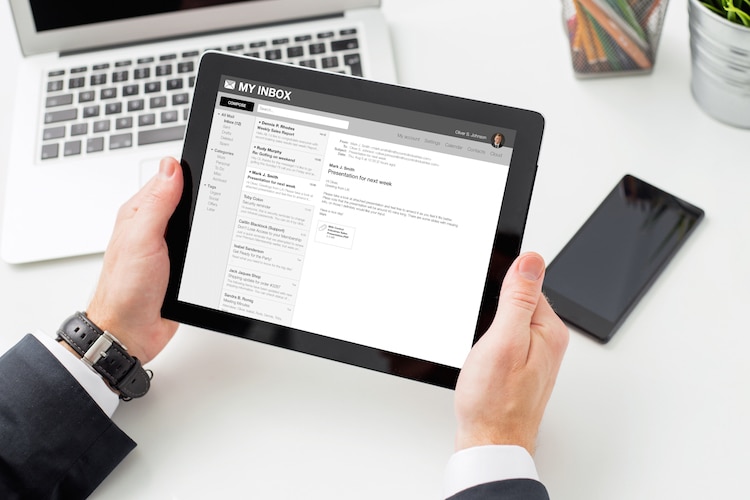Many businesses are transitioning from office-based to partial or full remote working setup. It’s a drastic move because of the pandemic. And yes, remote working has multiple advantages for business owners. It might be a better transition for more efficiency and lesser overhead costs.
But adapting to it is another thing. Converting to a remote setup doesn’t guarantee success. And one major learning curve is communication.

Synchronous vs. Asynchronous Communication
How do you communicate when you work remotely? In remote work, you rely on your communication software. But how do you use it effectively?
There are two types of communication — synchronous and asynchronous communication. It’s just a fancy way of saying synced and not synched. Synchronous communication means everyone is online at a particular hour so that you can communicate instantaneously.
On the other hand, asynchronous communication means communication is not real-time. You correspond with people expecting to get feedback on different time zones. Here are some examples:
Synchronous
- Instant messaging
- Chat rooms
- Video Conferences
Asynchronous
- Email (But some consider this synchronous if the reply is expected as soon as received.)
- Discussion Boards
- Shared Database
- Office Suite with Comment Functionality (like Google Office Suites)
So Which is Better?
The answer would depend on the nature of your business. Do you absolutely need all the information right away? Do you have employees in a different timezone? To help you decide, here are some advantages and disadvantages for both.

When is Synchronous Better
First, let’s discuss synchronous communication. It’s the communication you get in real-time when you virtually log-in on specific working hours. It can be beneficial in:

Brainstorming
When planning for marketing campaigns or critical business decisions, you may want to meet up face-to-face (at least through video conferencing). With this, you can spew out ideas on-the-spot. And deliberate the best one you can follow.
But keep this scheduled because you don’t want meetings to conduct meetings the whole day. Some remote companies always send out the agenda first so that your employees are informed with the topic you’re going to discuss. And they can also prepare beforehand.

Complex Discussions
Sometimes, you need to discuss things in-depth like onboarding procedures or using that new accounting software. Communicating synchronously during these complex discussions will save you time to demonstrate and discuss key points.

Emergencies
There will be emergencies when you run a company. Imagine your server suddenly crashing for some unknown reason. Or maybe you get a PR blunder from a viral video against your company.
You want to convene synchronously during these emergencies to take action properly.

Socializing
One of the top problems in a remote working environment is isolation. Humans are social beings. How can you feel a social connection if you only see email instructions and work comments? And if someone feels lonely, s/he can’t exactly function at 100%.
To address this, remote companies do catch-up calls or online company events just to socialize with their peers. In this way, they can feel that they have a family in your company.

When Is It Not?
The main drawback of synchronous communication is distractions. Have you ever experienced multiple meetings that are supposedly “productive”? Or that instant ping request of a colleague “for an important task” when working on crucial projects yourself?
The constant distractions are not healthy with your team’s productivity.
When you train your remote workers well, you can expect them to be independent enough to do their tasks without supervision.
Too much synchronous communication is detrimental to your business. As a supervisor or owner, you don’t have to micromanage each one to be productive. You can always use time trackers for that anyway.

When is Asynchronous Better
Asynchronous communication is quite the opposite of synchronous. Here, you don’t communicate in real-time. You use applications and platforms that let you leave comments and suggestions to further review output. And it’s quite beneficial for the following reasons:

More Focus
Remember the distractions from colleagues when they message you out of the blue? Or the meetings you surely hate because they consume so much time?
With asynchronous communication, you don’t have to deal with that. You work at your own pace. You can manage your time better.
And more importantly, you can focus on your work 100% without the distractions.

Wider Pool of Talents
There are many talented individuals around the world. But how can you tap them if you’re in Australia? Well, you can now with remote work. You just need to connect via the internet.
But you will get employees that are in a different time zone. You can still work with them productively with remote work.
Imagine hiring a graphic designer in the Philippines. You can assign a task when you’re about to sleep. And as s/he wakes up, s/he creates images for you that will be ready for feedback when you’re about to wake up.
It’s like making the most out of your 24 hours.

Worldwide Operations
And speaking of 24-hour operations, you can now cater to worldwide audiences with asynchronous communication. With technology today, you can operate around the clock.
When you sleep, your Asian team can wake up and handle their operations. When they sleep, your European team gets up.
And when it’s your turn to wake up, you manage Australian operations.
When you master your asynchronous communication system, the possibilities are endless.
When Is It Not?
Well, asynchronous communication is not perfect. There will be times when you need to work side-by-side with your employees and colleagues. And these are during emergencies, onboarding sessions, brainstorming, and socializing.
The advantages of synchronous communication setups are the disadvantages of the asynchronous ones.
Which One is For Your Business?
Again, it will depend on the nature of your business. But most remote companies employ both with varying degrees. Some 60% asynchronous, 40% asynchronous. Some 80-20.
But what’s important is that they get the benefits of both without suffering from the disadvantages. They will have asynchronous communication most of the time. And for some hours of the day, they can allot a specific time that overlaps of the two (or more) time zones their employees have.
Try out remote working for your business and reap the advantages! If you’re looking for your first remote team, check out our list for possible talents.
Leandro is a content creator and digital nomad who started his career as a remote working content writer. He is an advocate of location independent sources of income. And he believes that everyone has the ability to be one as well. If you have any content requests and suggestions, feel free to email him at leandro@remotestaff.com.

























 Zero Recruitment Fee
Zero Recruitment Fee